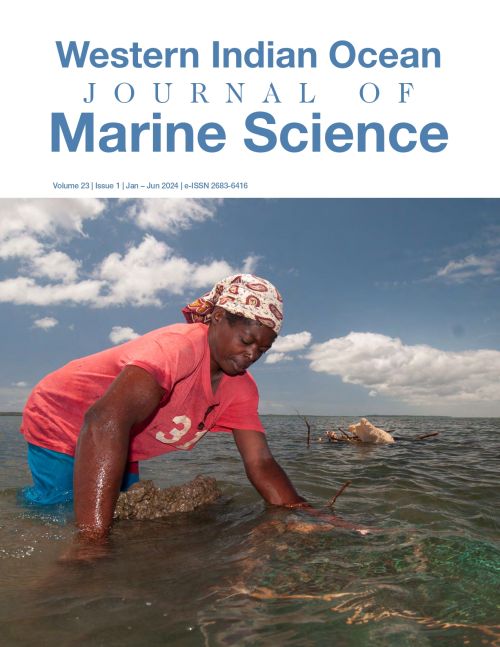Main Article Content
Meiofauna as bioindicators of organic and inorganic pollution of estuarine sediments in Kenya
Abstract
Meiofaunal density, diversity, and community assemblages were studied at the highly con- taminated Tudor Creek and the less contaminated Mida Creek in Kenya to assess their poten- tial as bioindicators of marine pollution. Sampling during the dry (January/February 2017) and wet (November/December 2017) seasons indicated a significantly greater total organic matter content at Mida (23.7 and 23.9 %) than at Tudor Creek (6.6 and 5.9 %) in the dry and wet seasons. Heavy metal concentrations were always greater at Tudor Creek. Meiofaunal densi- ties were greater at Mida (2729 and 2804 ind.10 cm-2) than Tudor Creek (612 and 183 ind.10 cm-2) during both seasons. Meiofauna at Mida Creek (10 and 7 taxa in the dry and wet seasons) were dominated by nematodes, copepods, and turbellarians. Meiofauna at Tudor Creek (8 and 6 taxa) were dominated by nematodes, turbellarians and ostracods. Meiofaunal diversity was greater at Tudor Creek, but dominance was highest at Mida Creek. Community dissimilarities between the two sites were shown in a Bray-Curtis cluster analysis. There is a high likelihood that heavy metals affect meiofauna density and diversity in the sediments of the two studied creeks in Kenya.







